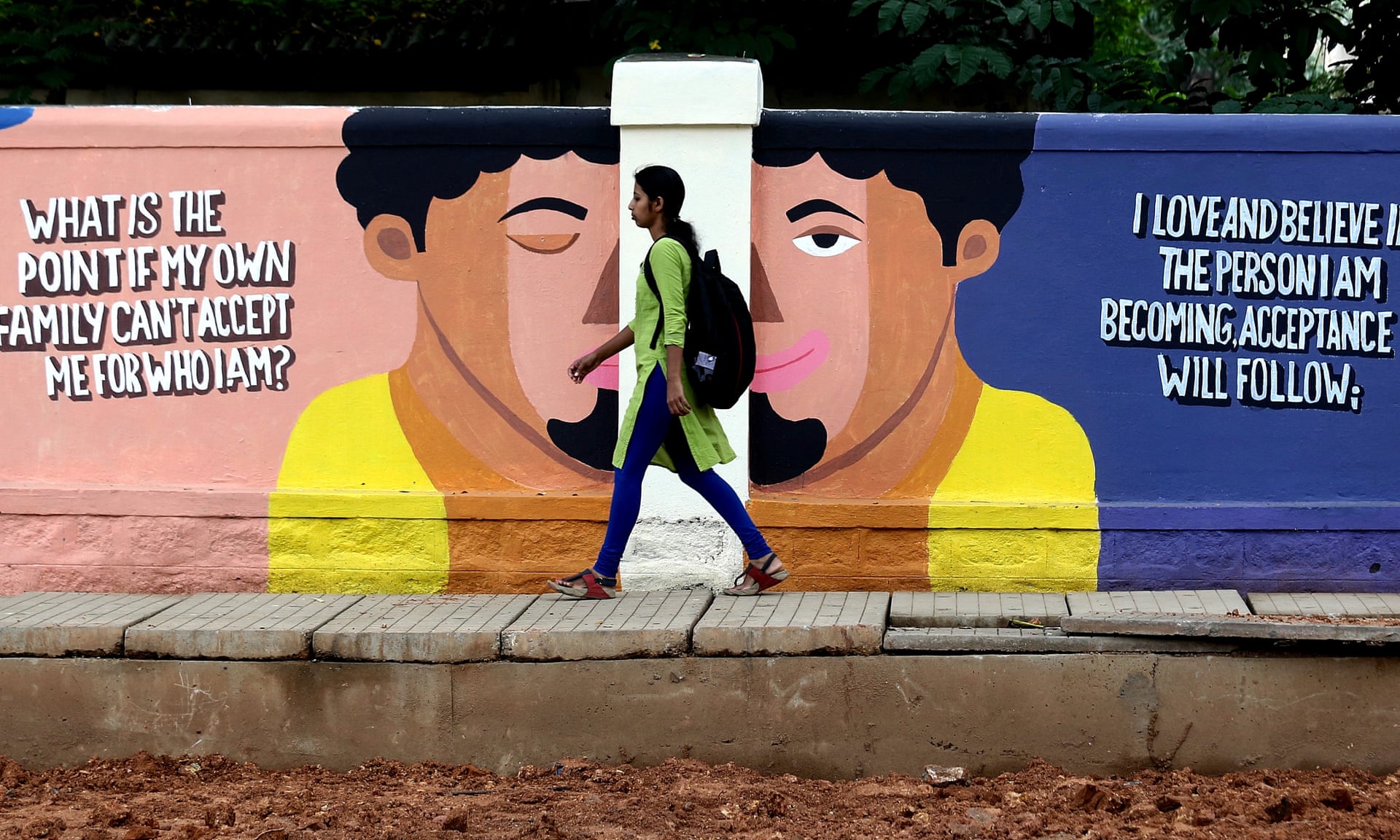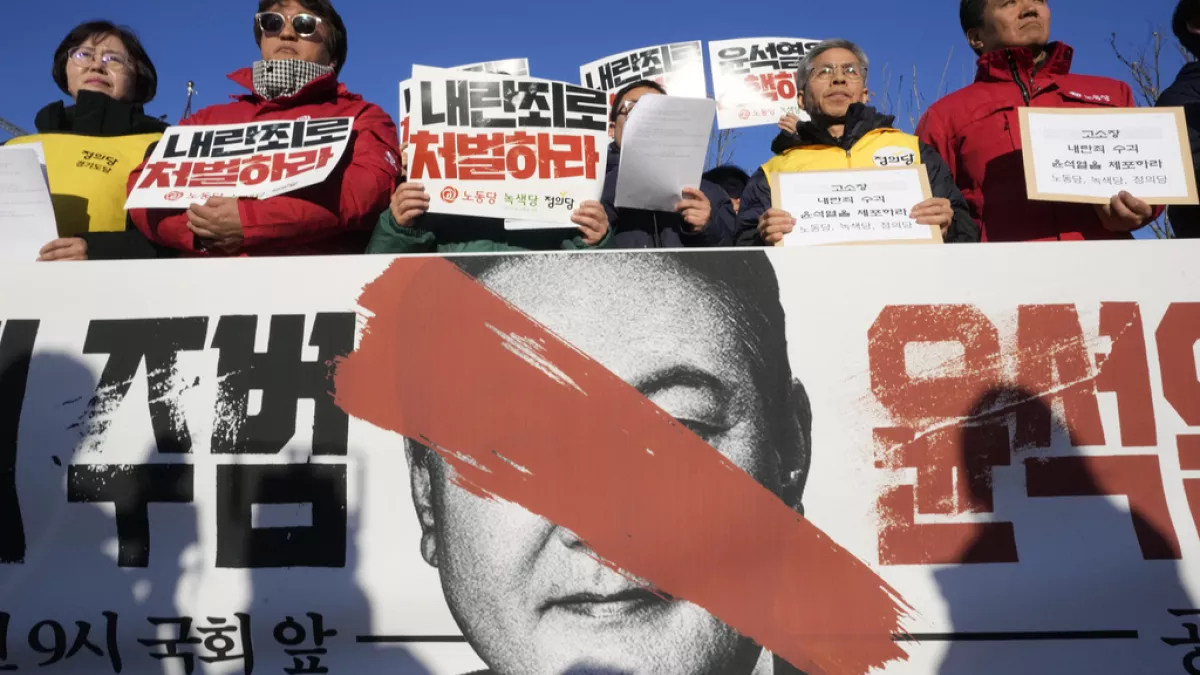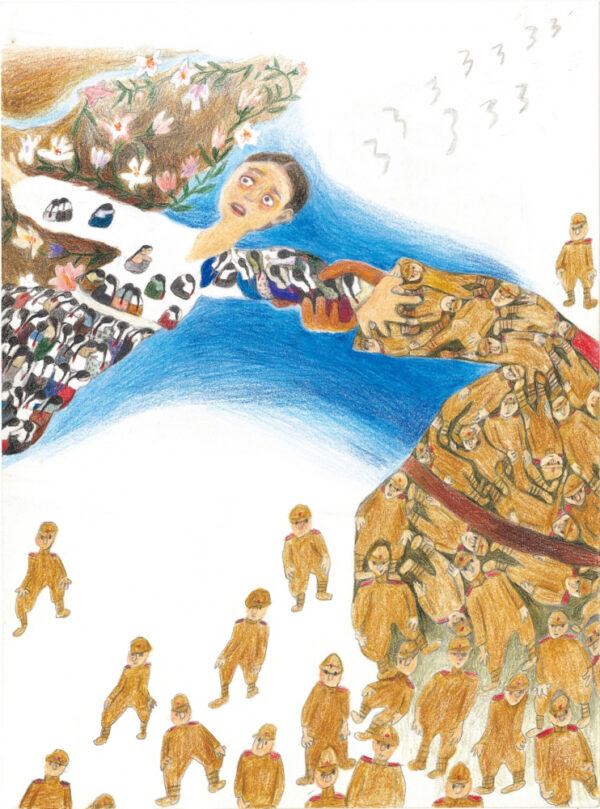Disclaimer: Please note that the views expressed below represent the opinions of the article’s author. The following work does not necessarily represent the views of the Synergy: Journal of Contemporary Asian Studies.
Acknowledgement: The author would like to thank the team at Dasra. Without the opportunities and support provided by them, this article would not have been possible.
“All izz well,” shout the inimitable trio of college students that helm the storyline of Three Idiots, a Bollywood comedy-drama from 2009 that remains a pop-culture icon today. The film pioneeringly delved into themes of parental pressure, unfulfilled aspirations and student suicide through the lives of a group of engineering students in India. This clarion call, claiming that “all izz well,” represents an attempt at self-assurance, an illusory affirmation that despite the nearly systemic and relentless assaults on their confidence, aspirations and mental health that these students must confront every single day, their situation is alright, bearable and perhaps even acceptable.
However, ‘all ‘izn’t’ well’. Deteriorating mental health, increasing suicide rates, an absence of accessible interventions and a lack of a cohesive framework to confront these challenges is an exceedingly prevalent reality faced by the Indian populous. A recent report, based on the National Mental Health Survey of India, states that more than 30 million adult Indians have considered committing suicide and 2.6 million have attempted to do so within the previous month. This marks a disproportionately high contribution to the global burden of suicide deaths and attempts.[1] Furthermore, while reliable data on levels of general mental wellbeing is rare, a study by the National Commission on Macroeconomics and Health in 2005 does reveal that “at least 71 million people in India have a serious mental disorder,” and that nearly 76-85% of such cases are left untreated.[2] These towering numbers, often accompanied by claims that they are underreported and constantly rising, indicate that attempts at providing accessible services and interventions at national, regional or selective levels in order to alleviate this burden are either absent, minimal or plagued by debilitating challenges.
I spent my last summer at Dasra, a strategic philanthropy organization in India, where I worked on a project proposing the establishment of a suicide helpline, through private funding, as a last-mile intervention for suicide prevention in India. This opportunity provided me with a window into understanding the specific barriers that challenge the successful and widespread implementation of cohesive responses to this mounting health problem. These insights along with a review of available academic literature helped me to identify three of the most critical challenges, faced by the various policy-based or NGO-driven attempts at tackling this immense problem: an absence of reliable data and research, a lack of cooperation amongst various stakeholders, and a continued prevalence of stigma. For a more successful implementation of policies and interventions, these hurdles must first be assessed and addressed.
The first and possibly most foundational of these challenges is the lack of available data and research around the complexities of mental health issues in India, and the continued failure of appropriate tracking and monitoring. As I learnt quickly at Dasra, the first step towards the successful and catalytic employment of philanthropy is building an understanding of the policy-level, ground-level and academic background of the targeted problem. As I attempted to aid the team in accomplishing this first step, the prevalence of this challenge became evident as we were confronted not only by minimal academic literature, but also an absence of reliable data that tracks the occurrence, risks and causes of suicide within the diversity of the Indian populous. This experience was echoed by sector experts and NGOs that had been making attempts at various forms of selective interventions, and promised to be particularly debilitating since it manifested itself at the very inception of any such attempts.
Most significantly, this lack of data and research hinders an understanding of what the more obscure ground-level realities, underlying dynamics and unique characteristics of the targeted problem area. It, therefore, impedes the possibility of interventions being effective and efficient in addressing these otherwise obscured ground-level realities and consequently in affecting sustainable change. One study, conducted by scholars Dandon et.al. from the Public Health Foundation of India and the Institute of Health Metrics and Evaluation, attempts to bridge the information gap. Using records in the National Crime Records Bureau, it builds an understanding of which groups are particularly vulnerable to suicide. This study and subsequent investigations reveal that “housewives recorded the highest proportion of suicide deaths over the decade” in India and that the “suicide death prevalence in Indian women is twice the average global suicide prevalence rate for women.”[3] This is a surprising discovery since the Indian media and popular and political discourse “have generally highlighted only farmer suicides,”[4] leading to a greater allocation of attention, conversations and resources around this demographic, and causing an effective ignorance of the scale at which suicide is a health problem amongst young women and housewives. Thus, the lack of reliable research and data collection can directly result in policies and interventions being dangerously blind to the most appropriate and efficient methods of allocating their resources.
This absence of data is further exacerbated by extensive inefficiency in the tracking and monitoring systems of existing interventions and policies, such as the latest iteration of the National Mental Health Programme. The NMHP is a policy framework, flounderingly implemented by the Indian government, in accordance with recommendations provided by the WHO.[5] Although the policy includes a monitoring and database system, a lack of central support has led to the “non-maintenance of the database by many states” and made the evaluation of the policy’s effectiveness extremely difficult.[6] Not only does this impede any attempts to adapt or improve the program’s implementation, but it also makes it exceedingly difficult to provide appropriate training to community members and health professionals, exacerbating a cycle of ineffective provision of services.[7] Therefore, this lack of data and research, prevalent at both the inception and implementation levels, poses an immense hurdle to the alleviation of mental health issues within India.
The second critical obstacle faced by the policy-based or NGO-driven interventions in India is the absence of cooperation within implementation. For past iterations of the NMHP, its regional elements, also known as the District Mental Health Programme (DMHP), and other policy-driven strategies, this manifests specifically in a lack of cooperation and engagement with the community and other stakeholders such as NGOs and philanthropists.[8] A lack of community participation has led such programs to lag in “areas of creating awareness, reducing stigma and continued community care,” making it difficult to expand, sustain and ensure the effectiveness of their application.[9] Additionally, despite the fact that NGOs and private stakeholders have been critical to the delivery of other similar programs such as family planning and TB control, these policies have frequently failed to engage the cooperation of these participants, slowing down and hampering the effective delivery of such programmes.[10]
The prevalence of this lack of cooperation and cohesion also extends to the more selective and targeted interventions implemented by NGOs and private stakeholders. While working on the suicide prevention project at Dasra, we learnt that there were more than 14 functional suicide helplines in India, run either by NGOs or private foundations, and yet none of these engaged in any attempt to cooperate with each other, often resulting in the inefficient overlapping of provision of resources. An example of this was the fact that since, due to limited resources, each helpline could only work for a limited number of hours during the day, many of these helplines functioned during the same time periods, leaving other parts of the day completely un-serviced. This inefficiency could be avoided by an attempt at greater cooperation and coordination between each of these organizations. Furthermore, while each helpline was collecting its own datasets, there was an absence of networks that could allow this information to flow between these groups, preventing greater learning for each organization. Consequently, the pervasive lack of cooperation, network-building and cohesion between the various stakeholders and independent efforts towards providing mental health support services is a significant hurdle in the tackling of this issue.
Finally, it is important to address the role of stigma in hindering the accessibility and efficacy of policies and interventions targeting mental health issues in India. Its most significant impact is in hindering the utilization of mental health services already available and therefore drastically reducing the efficacy of such services, even if they are efficiently allocated and cohesively designed, overcoming the challenges previously discussed. Ranging from internalization to socially reinforced prejudices, the various manifestations of stigma motivate “families to contain the affected person at home,” and “substantially [delay] or even [preclude] timely access to treatment.”[11] The misattribution of poor mental health and mental disorders to social and economic factors, rather than biomedical causes also results in the failure to even consider medical support and services.[12] This challenge is further exacerbated by the significantly low literacy rate, particularly among the Indian rural population, “leading to a lack of awareness and recognition of mental illness and often causing marginalization of and discrimination against mentally ill individuals.”[13]
Furthermore, the stigmatization of mental health issues, including suicide, often results in the underreporting of these issues, contributing to the lack of reliable data and analysis faced by intervention attempts. For example, the NCRB data used by Dandona et.al., which is based on the registration of a First Information Report (FIR) with the police regarding a particular death most certainly underestimates actual numbers. This is because “family/kin/community members” may tend to avoid reporting suicides due to the “stigma attached to suicide deaths.”[14] This arises partly from the fact that until very recently suicide was criminalized in India and also partly from a large spectrum of misplaced perceptions that tend to view mental disorders, illnesses and poor health as “shameful,” possibly infectious, unlucky, potentially inheritable and even as a punishment for past sins.[15] Therefore, the prevalence of such stigma is a significant impediment to more effective provision of mental health support services and the alleviation of this massive issue of health and wellbeing in India.
In conclusion, while the scale and complexity of the landscape of mental health issues in India are wide-ranging and immense, it is possible to identify some of the critically debilitating challenges that are faced by any attempts made to alleviate the burden of these issues. Tackling these hurdles may possibly be the critical first step that future initiatives and adaptations, whether policy-driven, NGO-led, privately initiated, or cooperatively conducted, must take in order to more effectively enact change. Firstly, it is necessary to initiate and encourage better systems of data collection, analysis and the subsequent employment of this information for any intervention attempt to be more efficient and effective. Additionally, any such attempts require a greater commitment to holistic cooperation and coordination between the various stakeholders and participants that are affected by or are engaging in addressing this immense problem. This will not only ensure greater sustainability of solutions but will avoid the wasteful repetition or failed employment of already limited resources. Finally, it is imperative to address the various forms of stigmatization that surround any discourse on mental health in India in order to allow for better utilization of available services and also to enable more accurate information accumulation and discourse. Perhaps then, India may be able to take a first step towards the boisterous shouts of “all izz well” sounding less hollow as they continue to blare across the country to the homes, school corridors and radio-sets of its population.
Vamika Jain is in her second year of a specialist in International Relations and a minor in Contemporary Asian Studies at the University of Toronto. She is a contributor for the South Asia section of the Synergy journal.
Bibliography
Dandona, Rakhi. “Enabling suicide prevention in India: a call to action.”The Lancet Psychiatry 7, no. 1 (January 2020): 3-4.
Dandona, Rakhi, Amelia Bertozzi-Villa, G. Anil Kumar, and Lalit Dandona.”Lessons from a Decade of Suicide Surveillance in India: Who, Why and how?” International Journal of Epidemiology46, no. 3 (2017): 983-993.
Dandona, Rakhi, G Anil Kumar, R S Dhaliwal, Mohsen Naghavi, Theo Vos, D K Shukla, Lakshmi Vijayakumar, G Gururaj, et al. “Gender differentials and state variations in suicide deaths in India: the Global Burden of Disease Study 1990–2016.” The Lancet Public Health3, no. 10 (2018): 478-489.
Gupta, Snehil and Rajesh Sagar. “National Mental Health Programme-Optimism and Caution: A Narrative Review.” Indian Journal of Psychological Medicine40, no. 6 (2018): 509-516.
Kermode, Michelle, Kathryn Bowen, Shoba Arole, Soumitra Pathare, and Anthony F. Jorm. “Attitudes to People with Mental Disorders: A Mental Health Literacy Survey in a Rural Area of Maharashtra, India.” Social Psychiatry and Psychiatric Epidemiology44, no. 12 (2009): 1087-1096.
“National Mental Health Programme.” National Health Portal. Last updatesOct 24, 2018. https://www.nhp.gov.in/national-mental-health-programme_pg.
Parekh, Amrita. “Reaching the Unreachable: The Promise of Telepsychiatry in India.” Columbia Social Work Review(2015). https://doaj.org/article/0524233855994b1fa40547d8f2757e9c.
Shidhaye, Rahul and Michelle Kermode. “Stigma and discrimination as a barrier to mental health service utilization in India.” International Health5, no. 1 (March 2013): 6–8.
[1] Rakhi Dandona,“Enabling suicide prevention in India: a call to action,” The Lancet Psychiatry 7, no. 1 (January 2020), 3-4.
[2] Amrita Parekh, “Reaching the Unreachable: The Promise of Telepsychiatry in India,” Columbia Social Work Review(2015), https://doaj.org/article/0524233855994b1fa40547d8f2757e9c.
[3] Rakhi Dandona, Amelia Bertozzi-Villa, G. Anil Kumar, and Lalit Dandona,”Lessons from a Decade of Suicide Surveillance in India: Who, Why and how?” International Journal of Epidemiology46, no. 3 (2017): 991.
[4] Ibid.; Rakhi Dandona, G Anil Kumar, R S Dhaliwal, Mohsen Naghavi, Theo Vos, D K Shukla, Lakshmi Vijayakumar, G Gururaj, et al, “Gender differentials and state variations in suicide deaths in India: the Global Burden of Disease Study 1990–2016,” The Lancet Public Health3, no. 10 (2018): 478-489.
[5]“National Mental Health Programme,” National Health Portal, Oct 24, 2018, https://www.nhp.gov.in/national-mental-health-programme_pg.
[6]Snehil Gupta and Rajesh Sagar, “National Mental Health Programme-Optimism and Caution: A Narrative Review,” Indian Journal of Psychological Medicine40, no. 6 (2018): 509-516.
[7]Gupta and Sagar.
[8]Gupta and Sagar.
[9]Gupta and Sagar.
[10]Ibid.
[11]Rahul Shidhaye and Michelle Kermode, Stigma and discrimination as a barrier to mental health service utilization in India,” International Health5, no. 1 (March 2013): 6–8.
[12]Shidhaye and Kermode.
[13]Parekh.
[14]“Lessons from a Decade of Suicide Surveillance in India: Who, Why and how?”
[15]“Lessons from a Decade of Suicide Surveillance in India: Who, Why and how?.”; Shidhaye and Kermode.; Michelle Kermode, Kathryn Bowen, Shoba Arole, Soumitra Pathare, and Anthony F. Jorm, “Attitudes to People With Mental Disorders: A Mental Health Literacy Survey in a Rural Area of Maharashtra, India,” Social Psychiatry and Psychiatric Epidemiology44, no. 12 (2009): 1087-1096.








